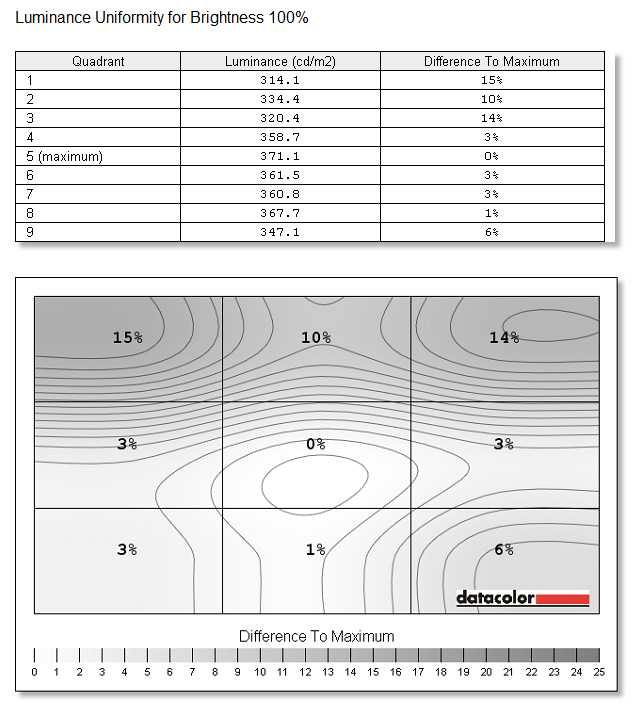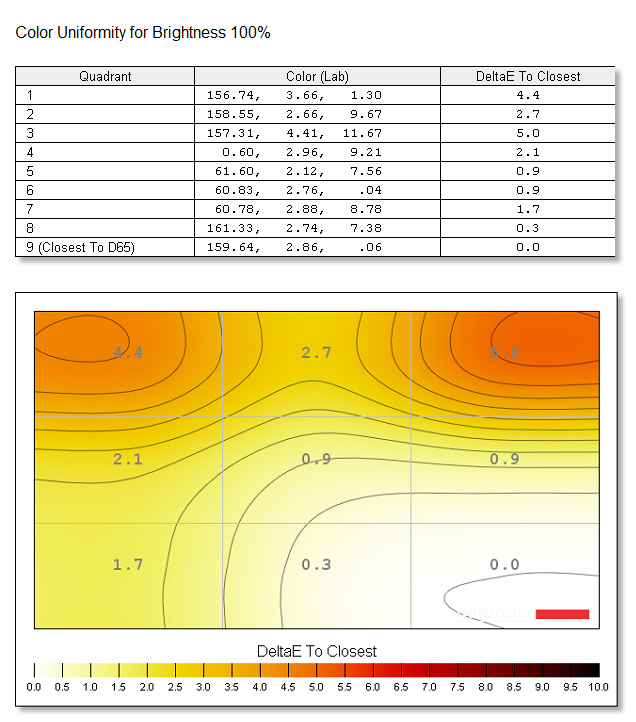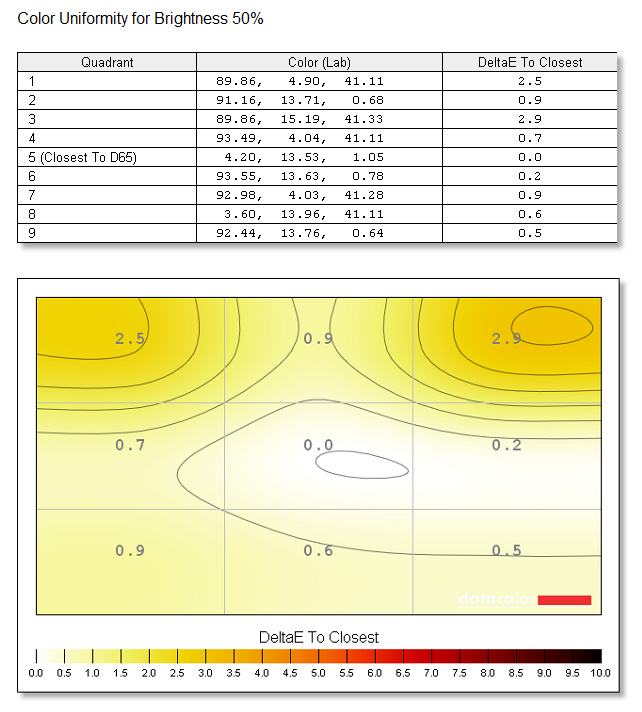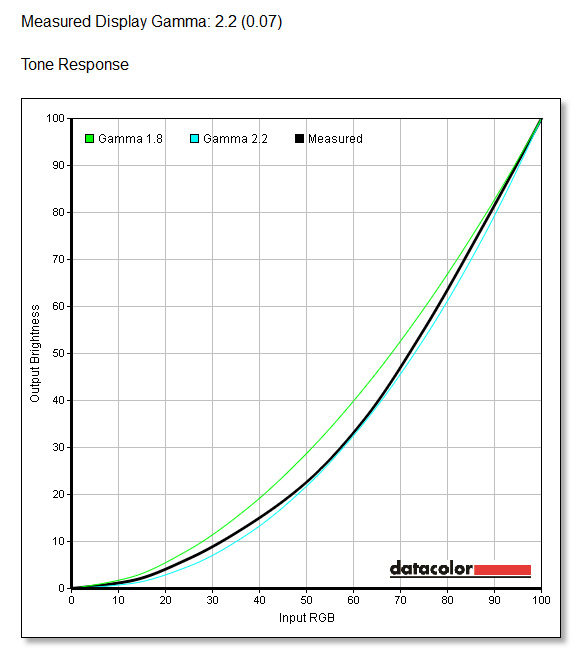Eurocom Panther 5D Notebook Review: Faster Than Your Desktop
There's a good chance that Eurocom's Panther 5D notebook is faster than your desktop. The sample we're reviewing sports a six-core Core i7-3970X, two GeForce GTX 680M modules in SLI, 32 GB of DDR3-1600, and three 256 GB SSDs. Talk about a beast!
Display Performance
Brightness, Contrast, And White Point
The maximum brightness of the Panther 5D’s Samsung panel is 377.4 cd/m2. This is brighter than many notebook screens, but close to 10% dimmer than the panel’s 400 cd/m2 published spec. Measured contrast is excellent. In my experience, the screen exhibits bright colors and deep blacks, and my measurements back that up.
A white point of 6500 K is considered neutral and close to the color of midday sun. If a screen measures below 6500 K, it takes on a warmer appearance that leans towards reds and oranges. If a screen measures above 6500 K, it is said to have a cooler appearance that favors the color blue. Cooler color temperatures are common in a retail environment because they make screens stand out next to other displays.
The Samsung panel's white point shifts from 6500 K at 25% brightness to 6900 K at full brightness. This shift towards a cooler white point as the screen becomes brighter means that calibration curves need to be created for each brightness level for the most accurate colors.
Viewing Angles
The screen has excellent viewing angles for a TN-based panel. Tilt the screen far forward and the colors shift to blue, tilt it far back and colors shift towards red. Side viewing angles are excellent, allowing several people to look at the display without a debilitating loss of quality.
Uniformity
Luminance uniformity is excellent on the bottom and middle sections of the screen, and merely good up top (the corners measure 15% and 14% dimmer than the center of the screen). This effect is visible on large swaths of single colors, but typically not noticeable in normal use. And the discrepancy is consistent across brightness settings.
Get Tom's Hardware's best news and in-depth reviews, straight to your inbox.
Of course, the uniformity of this specific panel may not represent all of Samsung's 120 Hz panels. This is but one sample, and we know that there's variance from one display to the next.
Color uniformity is again excellent in the center and lower sections, but not as much in the top corners. Once you get past a Delta E value of four, the differences are apparent. At full brightness, this panel's top corners report Delta E values of 4.4 and 5.0. The fact that the rest of the screen is so neutral may make those shifts stand out more.
Taking brightness down to 50% significantly improves the panel's uniformity. Most readings drop under one, while the top corners duck in under a Delta E of three.
Our main reservation here is that you'll want to game with the brightness cranked way up if you're using Nvidia's 3D Vision glasses, since they take a huge chunk out of perceived luminance.
Gamma
The Panther 5D's gamma measurement comes close to the reference 2.2 curve.
Current page: Display Performance
Prev Page Storage And Audio Performance Next Page Display Performance, Continued-
vmem I want the satisfaction of just dropping this monster on someone's desk, and sayReply
"personal server: DEPLOY!" -
coffeecoffee Great for individuals that moves around often (i.e LAN parties, get togethers, etc) IF the hardware can be kept cool AND if the fan doesn't sound like a space rocket taking off. However, one will need a deep pocket to afford something like this.Reply
@vmem "Personal Server: Please insert Credit Card to continue! $_$" -
f-14 now this is how you're meant to play crisis 1-2-3 right by any one with an iMac.Reply
the main people i can see needing this bad boy is division commanders on a battlefield as well as NSA hackers and CIA spies and Drone operators -
airplanegeek you guys didn't review the sound volume :(Reply
but what i really wanted to see was the effects of ocing the gtx 680Ms :P -
16bit Great article. Puts my 17.3 inch laptop to shame.Reply
Finally I can have high end desktop performance on the go.
-
palladin9479 I once had a Desktop Replacement laptop, huge monster that required a large AC adapter, was loud and heavy. These things are NOT portable, they are heavy to lug around and completely impractical for mobility. They are for people who, for whatever reason, do not want a desktop +monitor at their house. These are just desktops that are easier to transport around.Reply -
Belardo This seems more for bragging rights. Sure some people will NEED this... For a portable gaming system with 3 power-bricks, etc... why not get customized AIO? Or simply brink a small (SFF) case with keyboard and 20" display which would weight less? If you're gaming anyway - you'll need a mouse. The keyboard looks crappy, the numeric keypad is up against the main keys.Reply
Lets see, a SFF setup parts:
PC: 5 = SFF-PC, keyboard, mouse, monitor, 2 power cords.
5D: 7 = 5D Panther, Mouse, 2 power cords, 3 power bricks/converter.
In return, you get a much better keyboard... then when broken, its a $10~150 replacement... -
Avus It may be fast, but it sure look ugly. If i compare this notebook to a car, it will be a Mitsuoka Orochi.Reply





